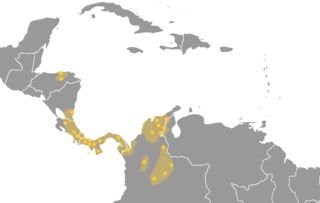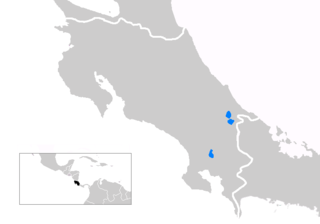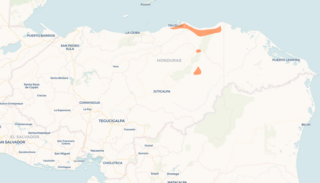
The Chibchan languages make up a language family indigenous to the Isthmo-Colombian Area, which extends from eastern Honduras to northern Colombia and includes populations of these countries as well as Nicaragua, Costa Rica, and Panama. The name is derived from the name of an extinct language called Chibcha or Muysccubun, once spoken by the people who lived on the Altiplano Cundiboyacense of which the city of Bogotá was the southern capital at the time of the Spanish Conquista. However, genetic and linguistic data now indicate that the original heart of Chibchan languages and Chibchan-speaking peoples might not have been in Colombia, but in the area of the Costa Rica-Panama border, where the greatest variety of Chibchan languages has been identified.

Costa Rican culture has been heavily influenced by Spanish culture ever since the Spanish colonization of the Americas including the territory which today forms Costa Rica. Parts of the country have other strong cultural influences, including the Caribbean province of Limón and the Cordillera de Talamanca which are influenced by Jamaican immigrants and indigenous native people, respectively.
Paezan may be any of several hypothetical or obsolete language-family proposals of Colombia and Ecuador named after the Paez language.

Amuzgo is an Oto-Manguean language spoken in the Costa Chica region of the Mexican states of Guerrero and Oaxaca by about 44,000 speakers. Like other Oto-Manguean languages, Amuzgo is a tonal language. From syntactical point of view Amuzgo can be considered as an active language. The name Amuzgo is claimed to be a Nahuatl exonym but its meaning is shrouded in controversy; multiple proposals have been made, including 'moss-in'.
Cueva is a poorly attested and often misclassified extinct indigenous language of Panama. The Cueva people were exterminated between 1510 and 1535 during Spanish colonization. During the 17th and 18th centuries the Kuna repopulated the Cueva area.

The Bribri are an Indigenous people in eastern Costa Rica and northern Panama. Today, most Bribri people speak the Bribri language or Spanish.
Lencan is a small family of nearly extinct indigenous Mesoamerican languages.
Mangue, also known as Chorotega, is an extinct Oto-Manguean language ancestral to Nicaragua, Honduras and Costa Rica. The ethnic population numbered around 10,000 in 1981. Chorotega-speaking peoples included the Mangue and Monimbo. The dialects were known as: Mangue proper in western Nicaragua, which was further subdivided into Dirian and Nagrandan; Choluteca in the region of Honduras' Bay of Fonseca; and Orotiña in Costa Rica's Nicoya Peninsula.
Talamanca is a canton in the Limón province of Costa Rica. The head city is Bribri, located in Bratsi district.

Dennis Graham Holt (born October 6, 1942) is an American poet, linguist and translator.
The Maléku Jaíka language, also called Malecu, Maleku, Guatuso, Watuso-Wétar, and Guetar, is an Indigenous American language in Costa Rica.

The Spanish conquest of the Chibchan nations refers to the conquest by the Spanish monarchy of the Chibcha language-speaking nations, mainly the Muisca and Tairona that inhabited present-day Colombia, beginning the Spanish colonization of the Americas.
Costa Rica's official and predominant language is Spanish. The variety spoken there, Costa Rican Spanish, is a form of Central American Spanish.

Macro-Chibchan is a proposed grouping of the languages of the Lencan, Misumalpan, and Chibchan families into a single large phylum (macrofamily).

Pech or Pesh is a Chibchan language spoken in Honduras. It was formerly known as Paya, and continues to be referred to in this manner by several sources, though there are negative connotations associated with this term. Alternatively, it has rarely also been referred to as Seco, Bayano, Taia, Towka, and Poyuai. According to Ethnologue there were a thousand speakers in 1993. It is spoken near the north-central coast of Honduras, in the Dulce Nombre de Culmí municipality of Olancho Department.
The Cabécar language is an indigenous American language of the Chibchan language family spoken by the Cabécar people in the inland Turrialba Region, Cartago Province, Costa Rica. As of 2007, 2,000 speakers were monolingual. It is the only indigenous language in Costa Rica with monolingual adults. The language is also known by its dialect names Chirripó, Estrella, Telire, and Ujarrás.

The Cabécar are an indigenous group of the remote Talamanca region of eastern Costa Rica. They speak Cabécar, a language belonging to the Chibchan language family of the Isthmo-Colombian Area of lower Central America and northwestern Colombia. According to census data from the National Institute of Statistics and Census of Costa Rica, the Cabécar are the largest indigenous group in Costa Rica with a population of nearly 17,000.
Káchabuké is a character from Talamancan mythology. It is a frog that Sibö involves in the creation of the magical Duluítami tree, which gives rise to the sea and other water sources.
Adolfo Constenla Umaña was a Costa Rican philologist and linguist who specialized in the indigenous languages of Central America. He is especially known as a leading scholar on Chibchan languages.
La Tulevieja, is a legendary figure from Costa Rican and Panamanian folklore. She is a ghost who wears a distinctive hat called a tule.











